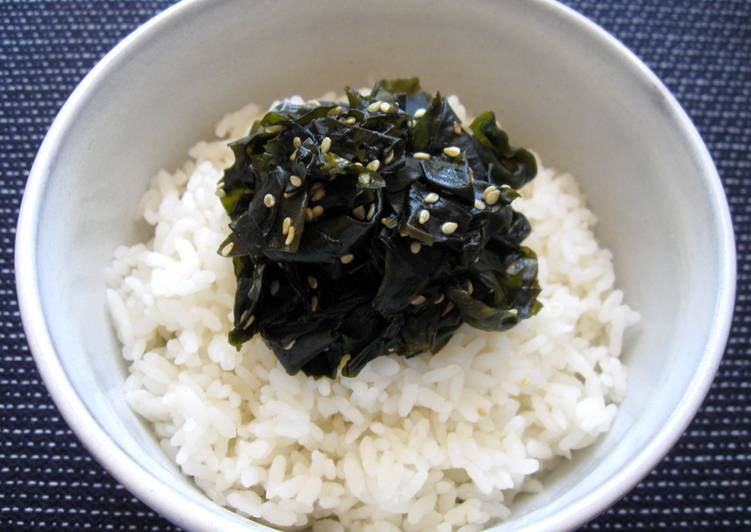Wakame ‘Tsukudani’. I love Kuki Wakame no Tsukudani (Wakame Seaweed Stems Boiled Down in Soy Sauce) which my grandma makes, so I decided to make it with the stems. It goes great with white rice and perfect for. When Kombu becomes soft, take it out from the water and pat dry.
 TUKUDANI is a preserved food made with soy.
Normal Mode Strict Mode List All Children.
Its nutrition is rich than kelp and there are protein, vitamin.
You can cook Wakame ‘Tsukudani’ using 6 ingredients and 4 steps. Here is how you cook that.
TUKUDANI is a preserved food made with soy.
Normal Mode Strict Mode List All Children.
Its nutrition is rich than kelp and there are protein, vitamin.
You can cook Wakame ‘Tsukudani’ using 6 ingredients and 4 steps. Here is how you cook that.
Ingredients of Wakame ‘Tsukudani’
- Prepare of (*about 12g) Dried Wakame.
- Prepare of Dashi Stock *OR 1 cup Water and 1/2 teaspoon Dashi Powder.
- Prepare of Sugar.
- Prepare of Mirin.
- Prepare of Soy Sauce.
- It's of Toasted Sesame Seeds.
Wakame salad, raw seaweed, Japanese cuisine. Japanese food, Tsukudani of konbu on cooked white rice. Wakame is one of the most commonly consumed types of seaweed in Japan and has a mild, sweet flavor. You may have seen this if you've had miso soup at your favorite local Japanese restaurant.
Wakame ‘Tsukudani’ step by step
- Soak Dried Wakame in cold water until soft, drain well. *Note: If Wakame pieces are large, cut into smaller pieces..
- Place Dashi Stock, Sugar, Soy Sauce and Mirin in a small saucepan, and bring to the boil. Add drained Wakame, reduce heat to medium low, and simmer until sauce is gone..
- Add Toasted Sesame Seeds and combine well. Enjoy with freshly cooked rice..
- Note: You can add a small amount of Sesame Oil for an extra flavour. Finely chopped Spring Onion can be added as well..
Wakame is one of the most popular and common seaweeds used in Japanese cooking. Most often sold either salted or dried, the long, slippery leaves are reconstituted in water or broth and often eaten in. Tsukudani (佃煮) is small seafood, meat or seaweed that has been simmered in soy sauce and mirin. High osmotic pressure preserves the ingredients. Its name originates from Tsukudajima, the island (in present-day Chūō, Tokyo) where it was first made in the Edo period.